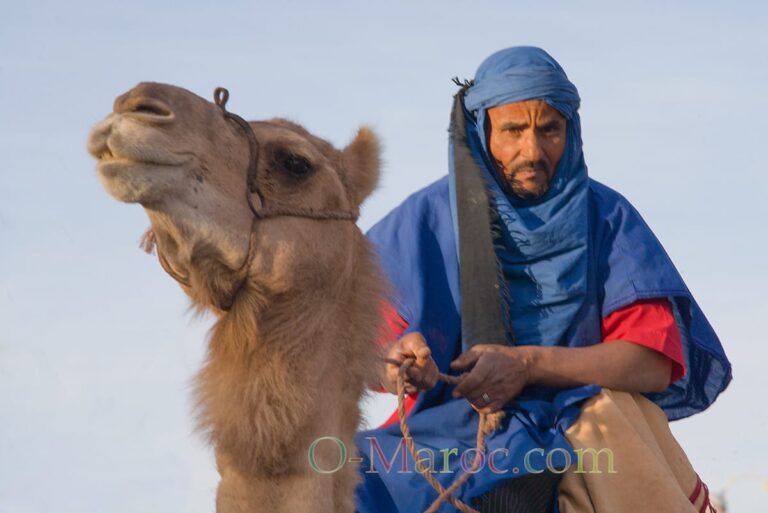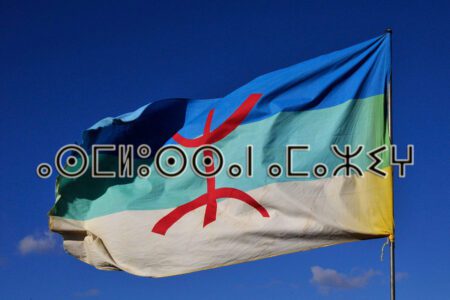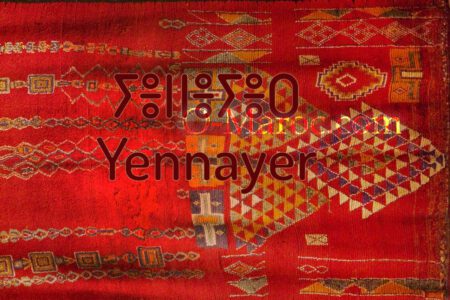It’s the latest fashion to go and meet the blue men in Merzouga or M'hamid. Or worse still, in the Aït Bouguemez valley… and why not in Tangier, while we’re at it?
The Sahara is big, but the “blue men” aren’t everywhere
Alas, it’s like showing Tower of London guards at the foot of the Eiffel Tower, on the pretext that the two countries are in Europe.
A “blue man” is a Tuareg. He’s a Berber nomad, certainly, but from the other side of the Sahara, whose nomadic zone covers part of Mali, Niger and Mauritania, but who has never, ever arrived in Morocco as he defines himself today.
A blue man is blue because he wears indigo-dyed veils, which dark blue, almost black, gradually rubs off onto his skin, turning it blue.
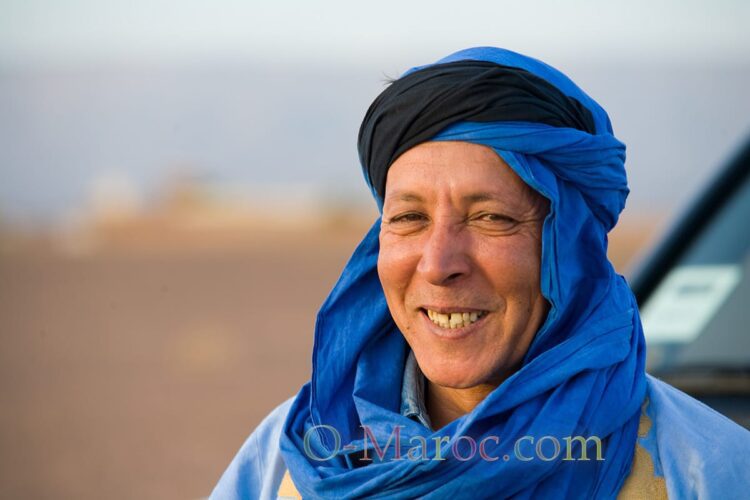
That’s not a blue man. He’s a Moroccan Berber wearing a djellabah and a light blue chêche. And who speaks the Tamazight or Tachelhit dialect, one of the three variants of the Berber, or Amazigh language spoken in Morocco, but who is incapable of understanding Tamasheq, the Berber of the Tuaregs, which is as far removed from Moroccan dialects as Sicilian street speech is from Walloon.
The “blue” veil is almost black
Now that’s a “blue man”. A Tuareg prince at cure salé (the “moussem” of the nomads in Niger).
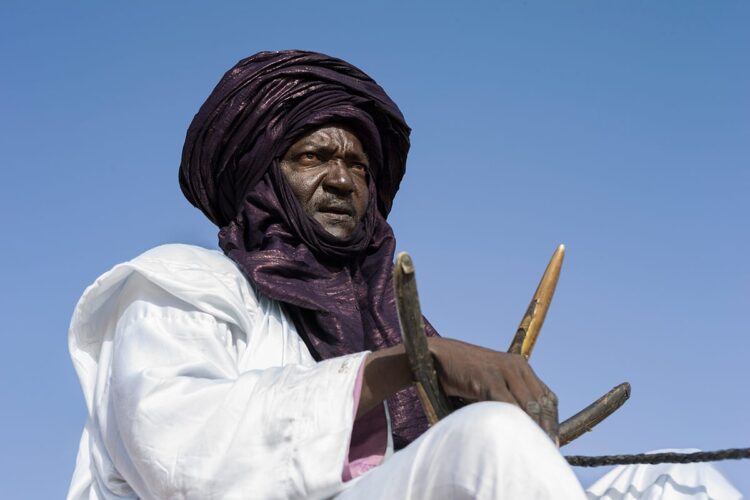
The nomadic tribes that populated Morocco came gradually from the east, from Egypt in fact, in a slow migratory movement that began with the fall of the Roman Empire.
Berbers and Hassanis are not Tuaregs
The tribes around Merzouga are Berbers, the Aït Khabache, who were never Touaregs. The tribes to the south of M’hamid are Arab, Hassanias, who settled there at a time when the sultans of Morocco used them to break the power of the Berbers, particularly the Aït Atta.
In short, you should know that if you’re being presented with ‘blue men’, you’re being presented with something that’s false and fabricated, just because it’s a bit of a dream.
Colonial France’s fascination with the Tuaregs
And this dream dates back to colonial France, which fell in love with these “proud warriors”, especially as their chief, Moussa Ag Amastane, took their side in the tribal wars. France’s fascination with the Tuareg was passed on to it by Charles de Foucauld, the great desert surveyor, dictionary writer and (supposedly) friend of the Tuareg.
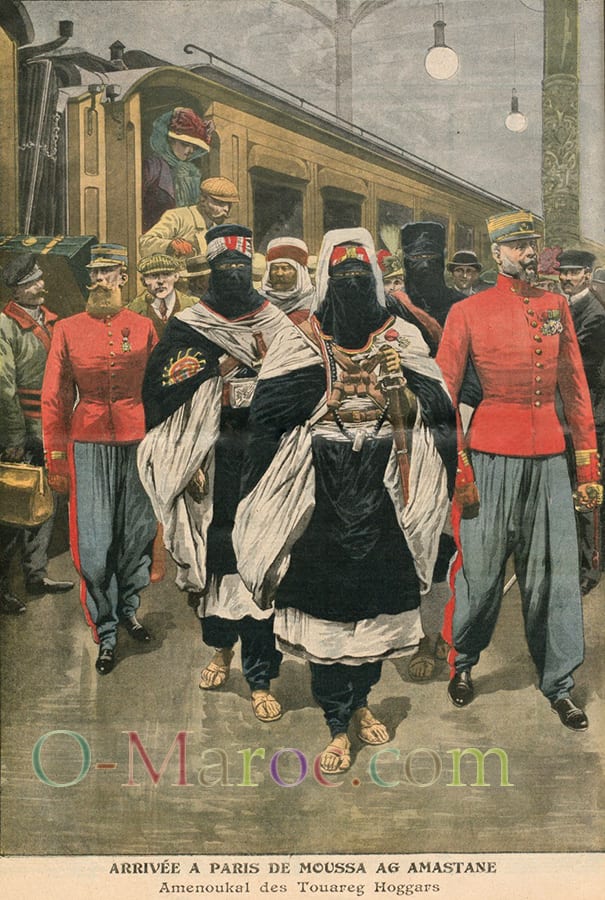
It has to be said that the arrival at the station of this supreme prince of the Tuareg, in full regalia, accompanied by a retinue just as turbaned and masked as himself, was enough to make anyone dream!
This fascination has been nurtured by poetry and the status of women in Tuareg society, and is reflected today in the cliché served up to tourists.
There’s nothing wrong with dreaming, but distorting history is something else!
 A typo or syntax error? You can select the text and hit Ctrl+Enter to send us a message. Thank you! If this post interested you, maybe you can also leave a comment. We'd love to exchange with you !
A typo or syntax error? You can select the text and hit Ctrl+Enter to send us a message. Thank you! If this post interested you, maybe you can also leave a comment. We'd love to exchange with you !

